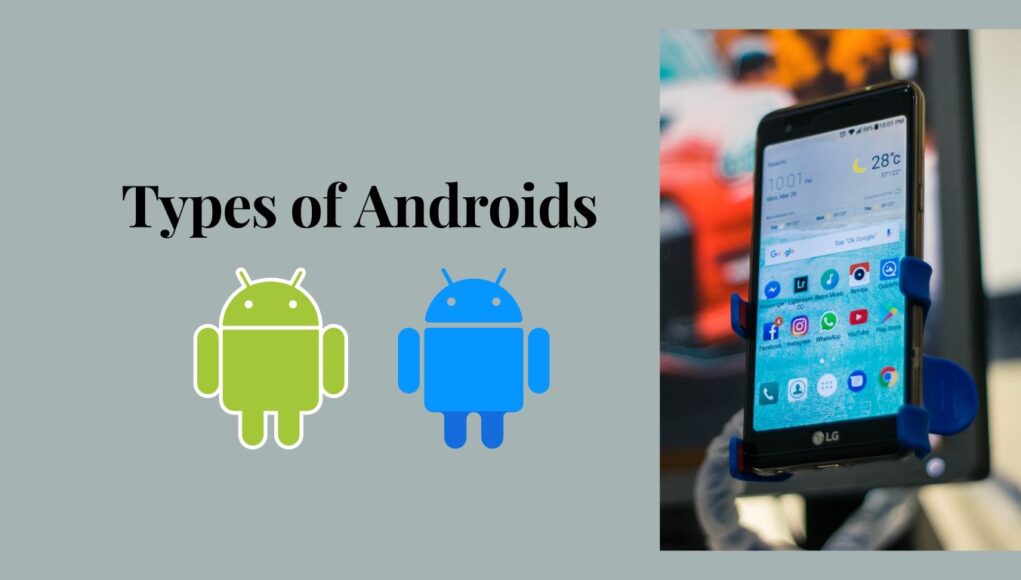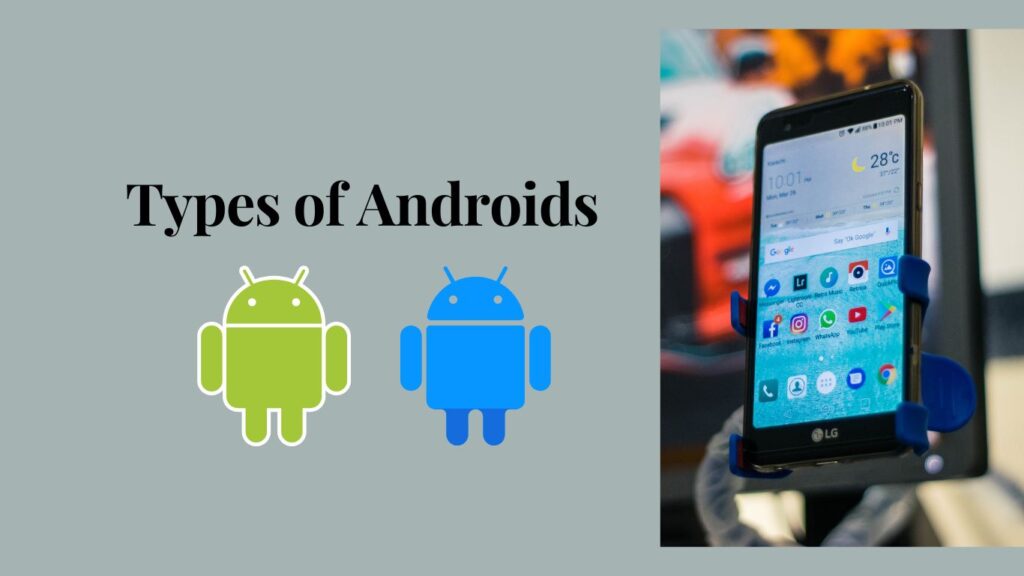Android is an open-source operating system & many Types of Androids developed by Google for mobile devices such as smartphones, tablets, and smartwatches. It is based on the Linux kernel and designed primarily for touch screen mobile devices. Android offers a customizable and user-friendly interface with a wide range of features and applications, including Google Play Store, which allows users to download and install a variety of third-party apps.
Android is the most widely used mobile operating system in the world, with a market share of over 70%.
Types of Androids
Types of Androids
There are different types of Android operating systems available, including
Stock Android
This is the pure and unmodified version of Android that comes pre-installed on Google’s own devices, such as Pixel phones.
Android One
Android designed this version for low-end devices, and it comes with a clean and optimized user interface. It also receives regular security updates and software upgrades directly from Google.
Android Go
OS Android has optimized this lightweight version for low-end devices with limited hardware resources. Android has pre-installed lightweight versions of Google apps, and they have designed it to run smoothly on devices with as little as 512MB of RAM.
Custom Android ROMs
Third-party developers create these customized versions of Android, which can be installed on supported devices. Examples of popular custom Android ROMs include LineageOS, Paranoid Android, and Resurrection Remix.
Android TV
OS Android designed this version specifically for televisions and streaming devices. It comes with a user-friendly interface optimized for larger screens and supports a wide range of streaming apps.
Android Auto
Operating System Android designed this version for use in cars, enabling users to connect their Android devices to their car’s infotainment system and access maps, music, and other apps.
Android Wear
This is a version of Android that’s designed for wearable devices, such as smartwatches. It comes with a user-friendly interface optimized for small screens and supports a wide range of health and fitness apps.
Use Of Androids (All Types of Androids)
OS Android devices are incredibly versatile and can be used for a wide range of purposes. Some common uses of Android devices include:
Communication
Users can use Android devices for phone calls, texting, email, and video conferencing, making it easy for them to stay in touch with friends, family, and colleagues.
Entertainment
With access to apps like Netflix, Spotify, and YouTube, Android devices are great for streaming music, movies, and TV shows. They’re also great for playing games and reading books.
Productivity
Users can use Android devices for productivity tasks such as creating and editing documents, managing emails and calendars, and accessing cloud-based storage solutions.
Navigation
Android devices have GPS functionality and apps like Google Maps that enable users to use them for navigation and finding directions.
Fitness and Health
Users can use Android devices for tracking fitness activities and monitoring health data such as heart rate, sleep patterns, and calorie intake.
Home Automation
Users can use Android devices to control smart home devices such as lights, thermostats, and security systems.
Overall, we can use Android devices for a wide range of purposes to enhance our daily lives, making them incredibly versatile.
Alternatives of Android (All Types of Androids)
There are several alternative mobile operating systems to Android, some of which include
iOS
Developed by Apple Inc., iOS is the operating system used on iPhones, iPads, and iPod Touch devices. It has a similar design philosophy to Android, but with a more restrictive user interface and a focus on security.
Kai OS
KaiOS, a mobile operating system based on Linux, is designed to run on feature phones and low-end smartphones, optimized for 4G networks. It supports popular apps like WhatsApp, Google Maps, and YouTube.
Tizen
Developed by Samsung and backed by the Linux Foundation, Tizen is a Linux-based operating system designed for use on smartphones, tablets, smartwatches, and other IoT devices. Samsung’s Galaxy Wearable line of devices is supported by it, and it’s known for its user-friendly interface.
Harmony OS
Developed by Huawei, HarmonyOS is a microkernel-based operating system that can run on a wide range of devices, including smartphones, tablets, smartwatches, and smart TVs. It is designed to provide a seamless user experience across all devices and supports a wide range of third-party apps.
Lineage OS
This is an open-source mobile operating system based on Android that’s designed to offer a customizable and privacy-focused experience. It’s a popular choice for users who want to take control of their device and customize it to their liking.
Overall, several alternative options are available for those looking for something different, despite Android being the most widely used mobile operating system.
Features of Android (Types of Androids)
- User interface and customization options
- Access to Google Play Store
- Multitasking capabilities
- Integration with Google services
- Open-source nature
Advantages of Using Android
- Wide range of devices and price points
- Customization and flexibility
- Access to Google services and apps
- Integration with third-party services
- Strong developer community and support
Disadvantages of using Android (Types of Androids)
- Fragmentation of devices and software versions
- Security concerns and vulnerabilities
- Bloatware and pre-installed apps
- Limited support and software updates for older devices
- Inconsistent user experience across devices and manufacturers



















